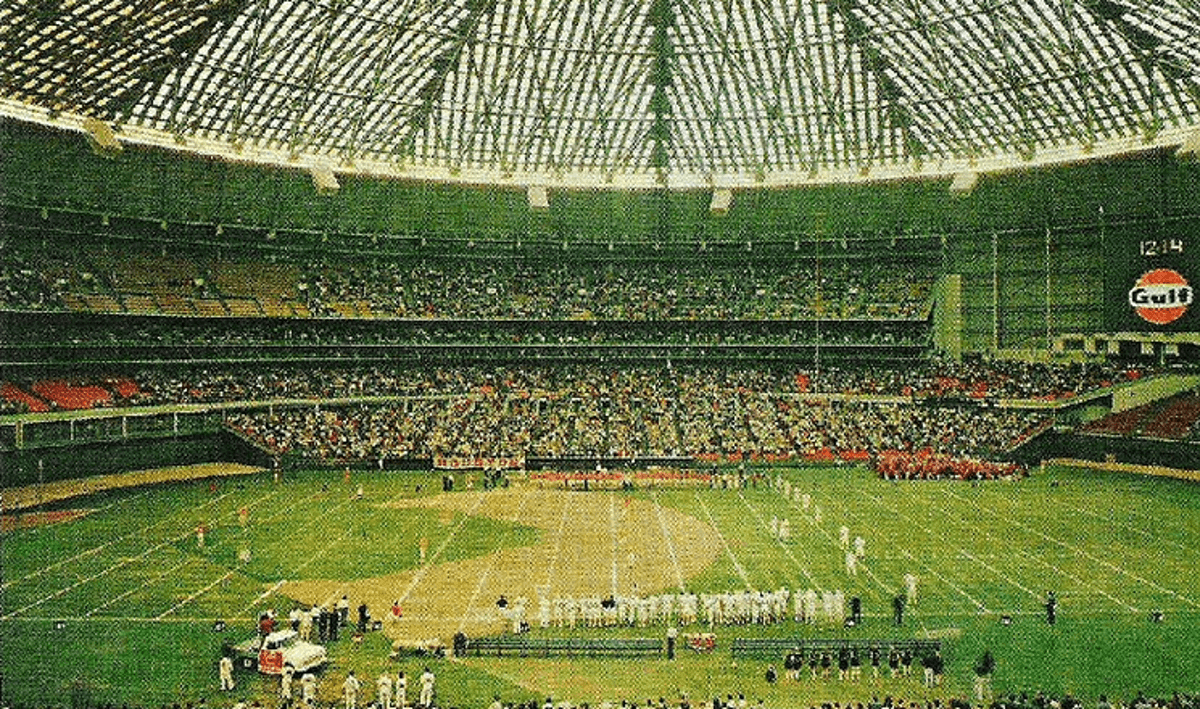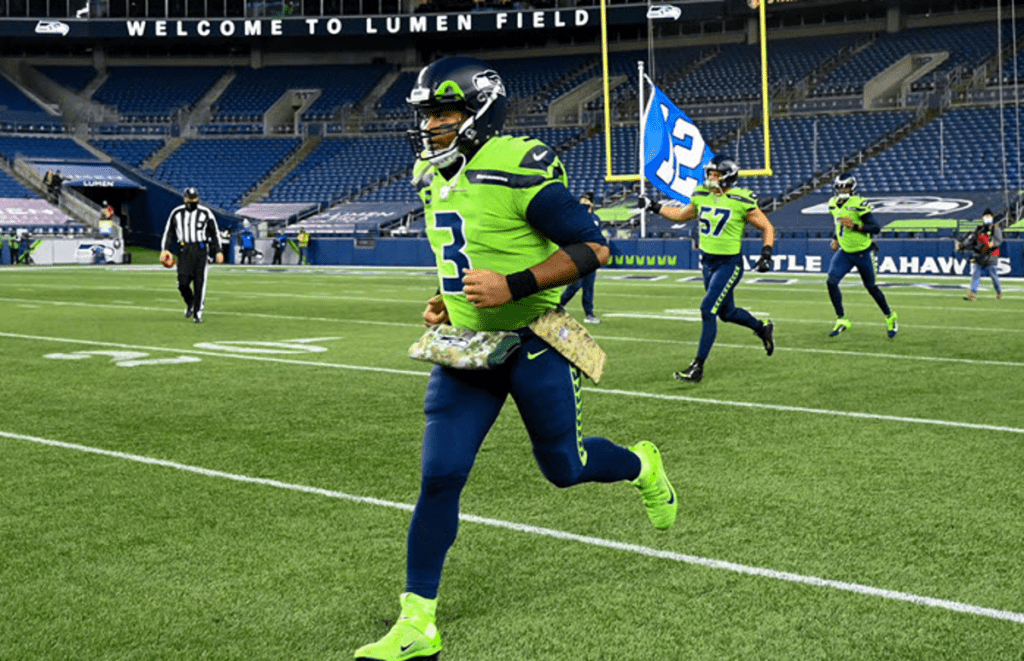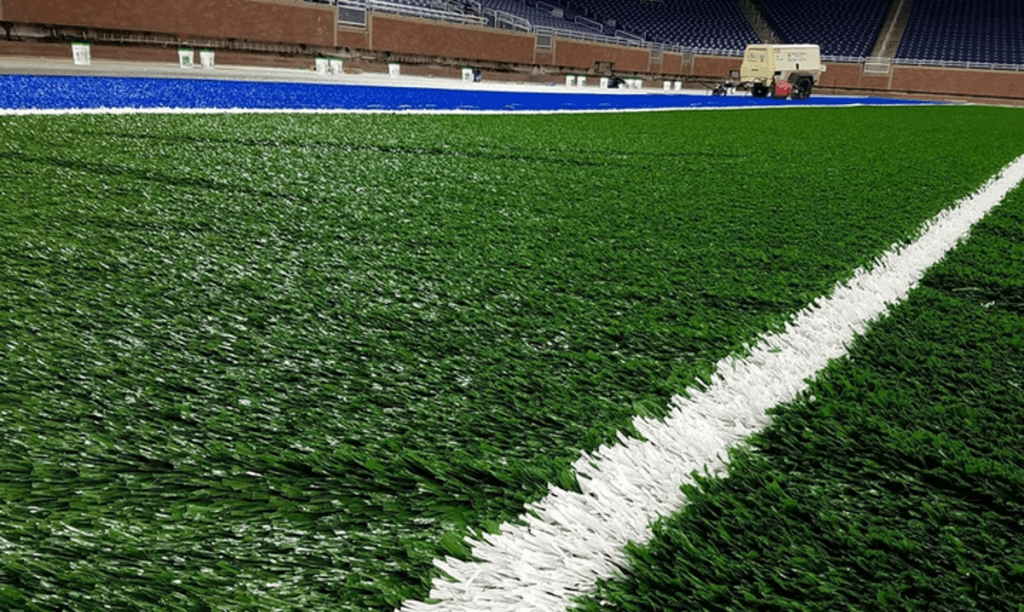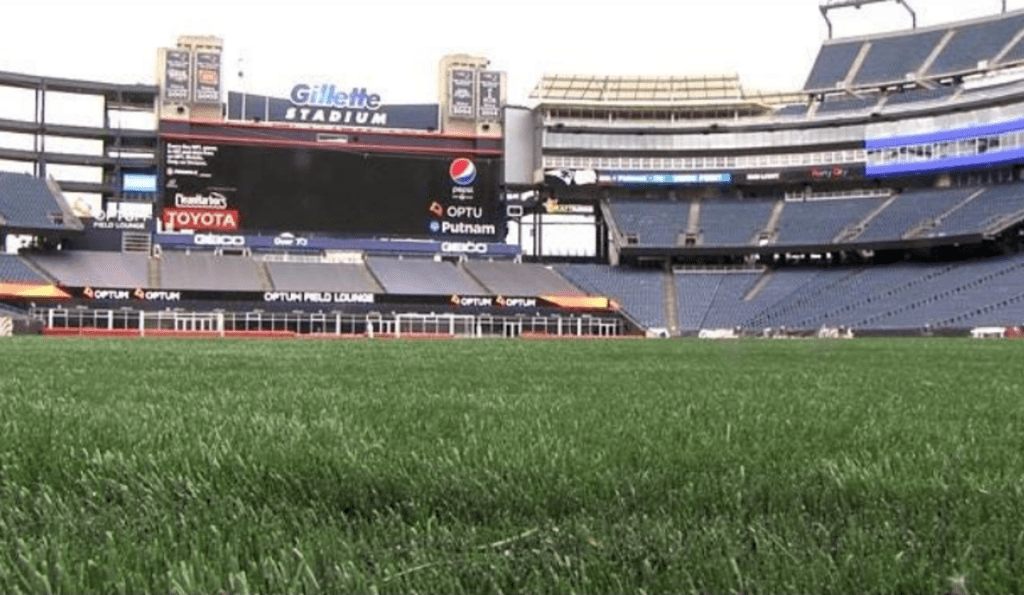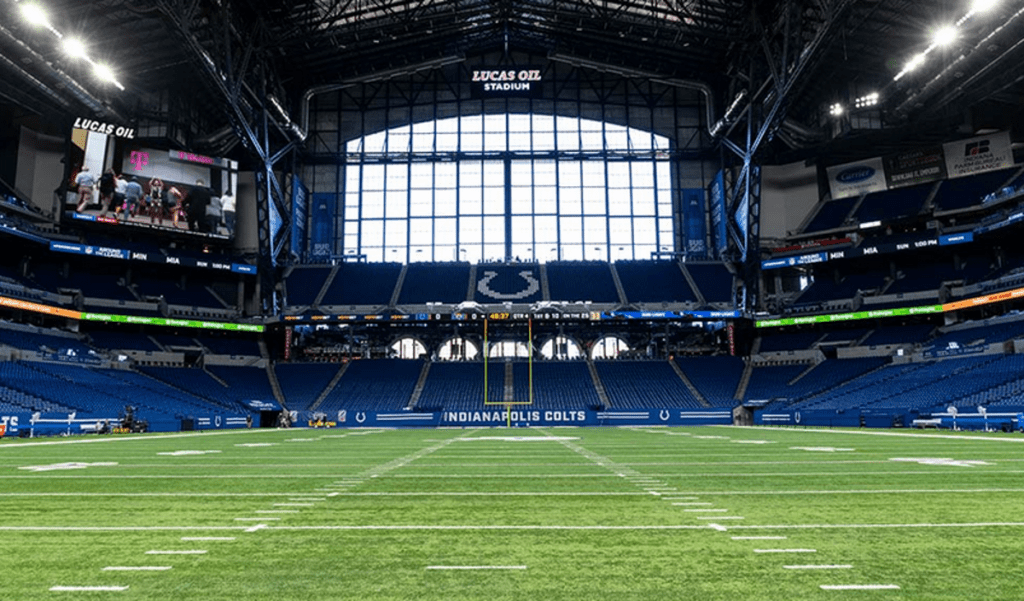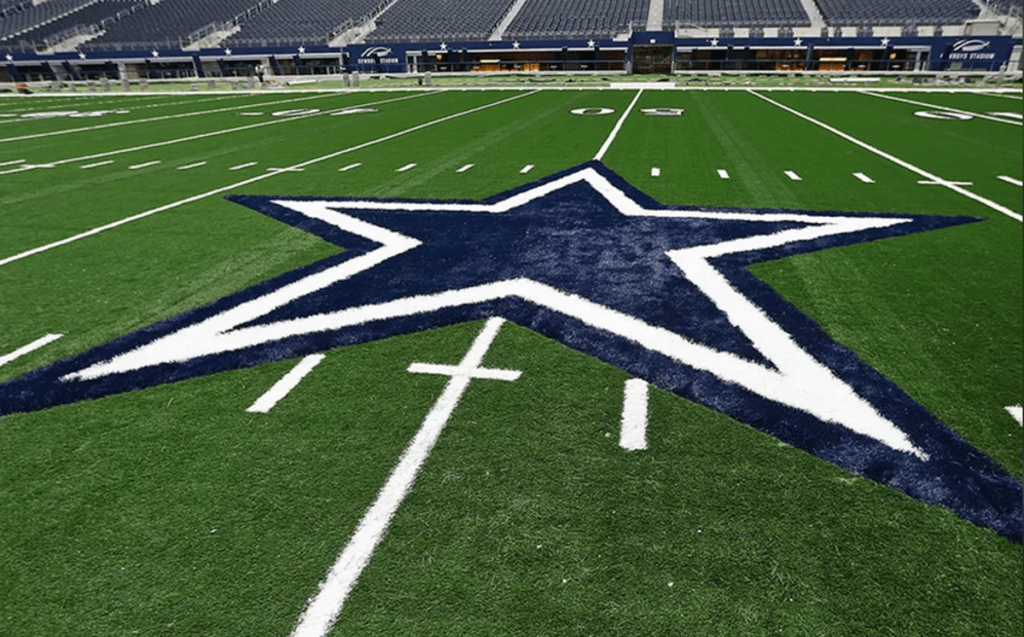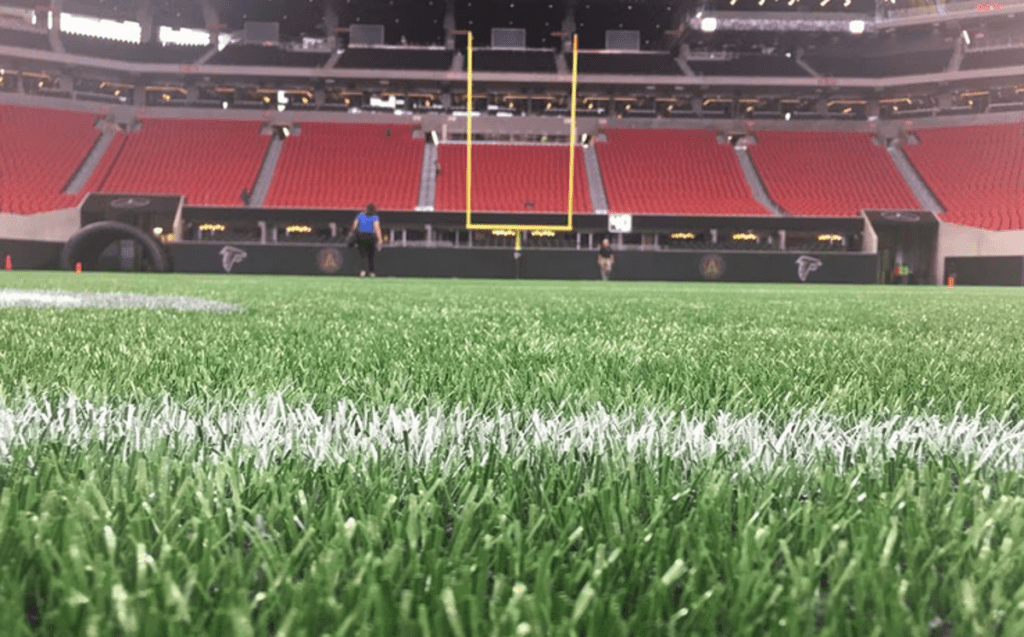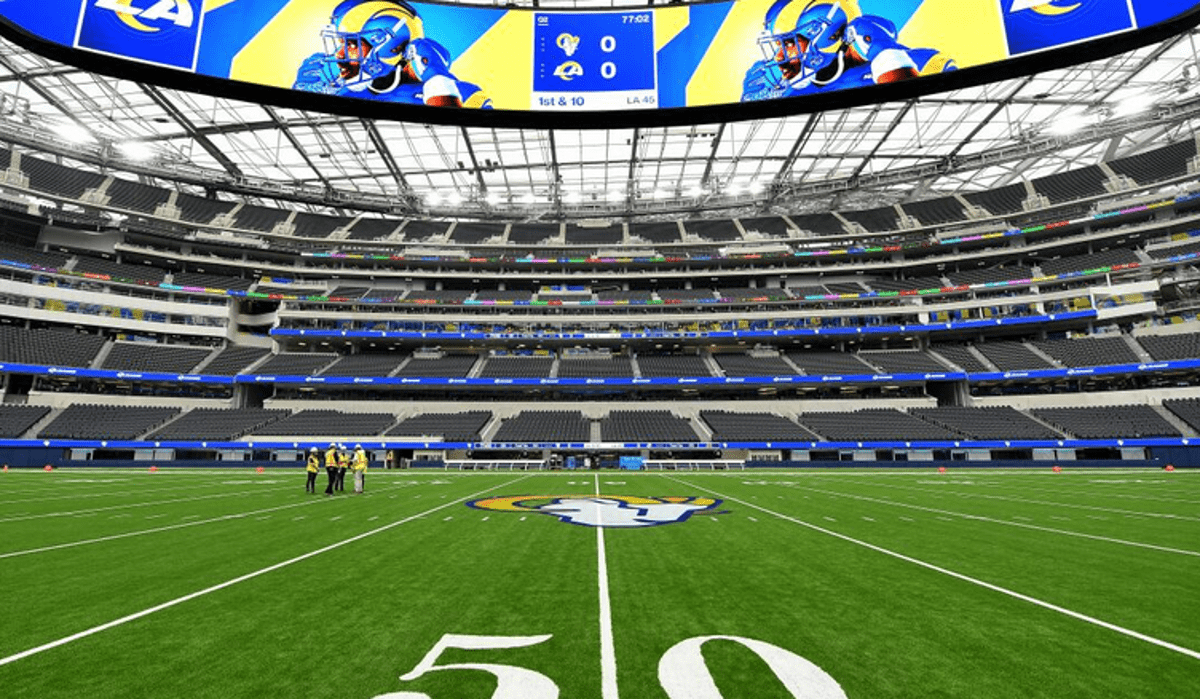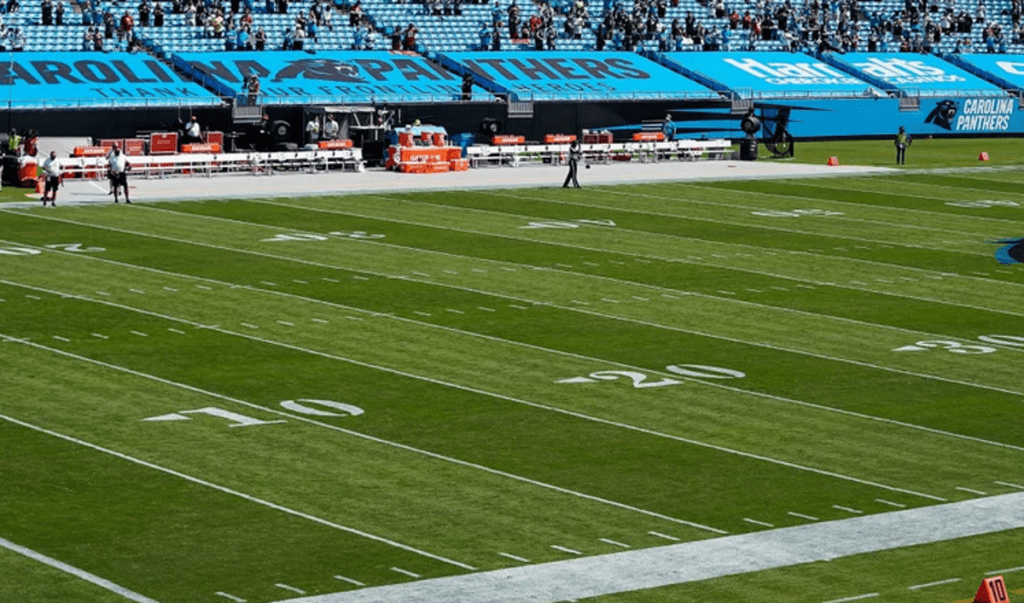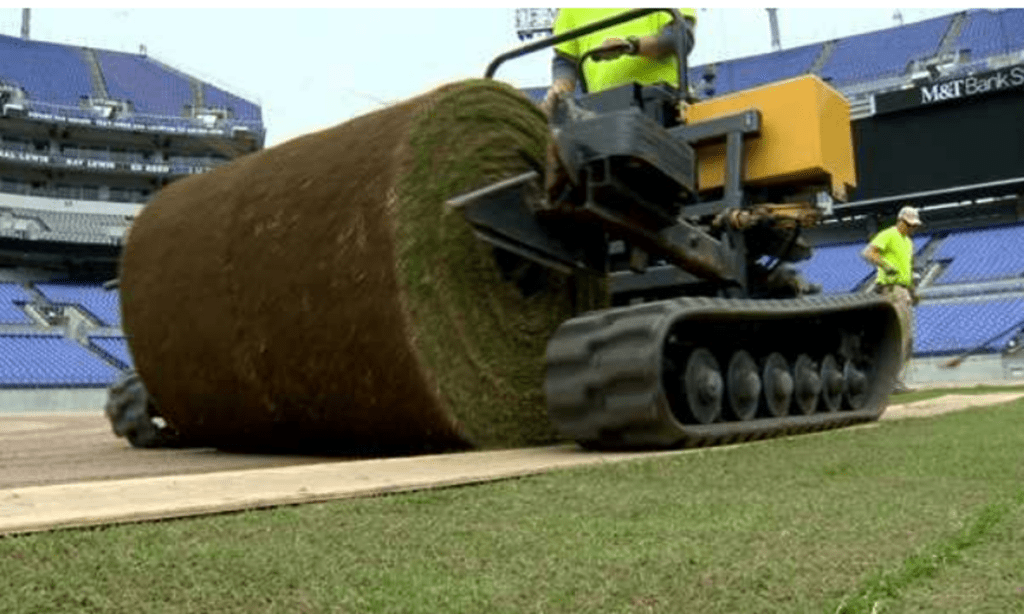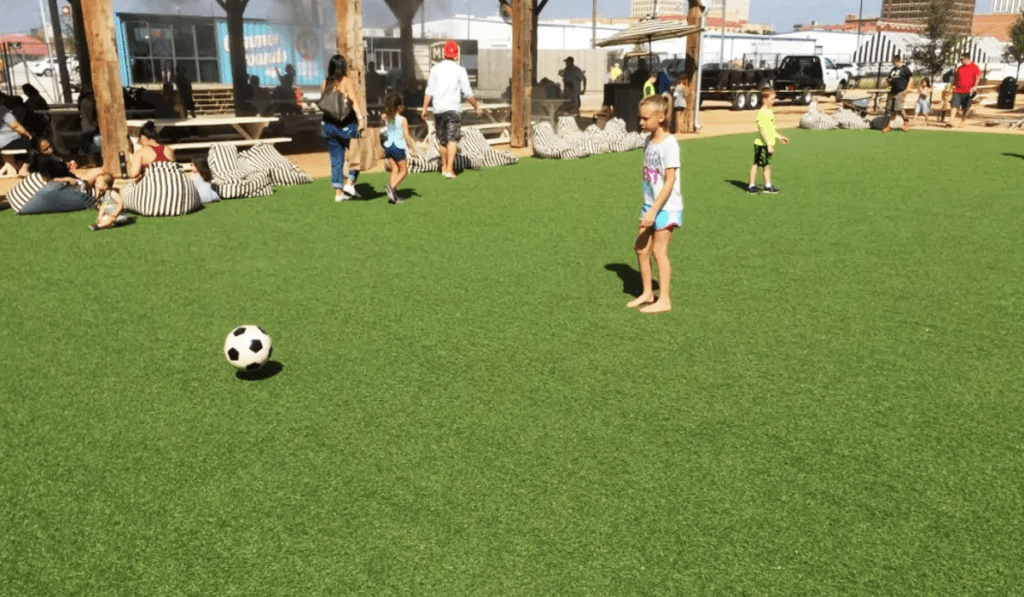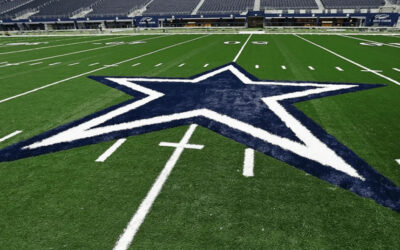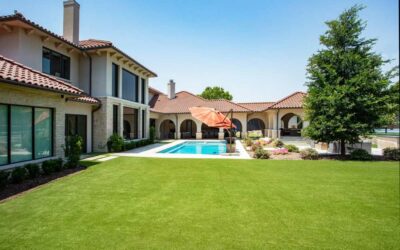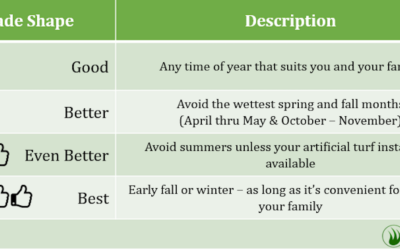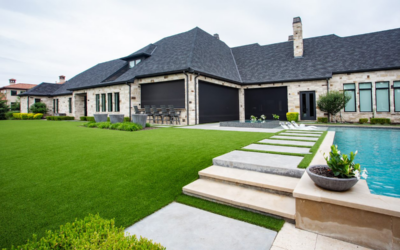A total of 15 NFL fields currently use turf — home to 17 teams in the competition. This compares with 13 teams and stadiums using real grass and two using a “hybrid”, though this ratio is about to change slightly as one team will revert to grass in their new stadium due to be ready in 2026.
NFL stadiums of the past, predating the current stadiums, also used artificial turf — going right back to the 1960s when AstroTurf first made an appearance in the U.S.
So, when did the current NFL stadiums with turf fields switch from grass fields — and why?
Here’s a brief history of NFL turf fields and a rundown of all the present NFL stadiums with artificial turf in chronological order, starting with the first stadiums to install turf and ending with the most recent:
A brief history of turf fields in the NFL
The first installation of turf in the current batch of 30 NFL stadiums was at the home of the Buffalo Bills — but the relationship between football and turf predates that.
In fact, the first professional teams to play a football match on turf were the Houston Oilers and the Kansas City Chiefs in the American Football League in September 1968. The home of the Oilers (The Astrodome) was the first pro sports venue to use an artificial surface after the original grass surface died.
The original AstroTurf, which had been in the Astrodome since 1966, bears little resemblance to the high-quality turf employed on professional sports fields today.
The first NFL stadium to play on artificial turf was Franklin Field, when the Philadelphia Eagles hosted the Cleveland Browns in September 1969.
Shortly after, other NFL stadiums (no longer in use) followed by switching from real grass to turf. in the past two decades, the trend among more modern NFL stadiums has accelerated and most of the most recent additions have installed synthetic turf.
First to last: When the NFL turf fields switched from grass…
Buffalo Bills: Highmark Stadium (1973)
When the Buffalo Bills moved from the War Memorial Stadium into the Rich Stadium (now called the Highmark Stadium) in 1973 and became part of the NFL, artificial grass (AstroTurf) was the playing surface from day one.
It’s one of only two stadiums currently in use in the NFL that has never had real grass as its primary playing surface.
This open-air stadium has a capacity of 71,870 for NFL football and has been renovated on several occasions. Most recently, in 2019, new artificial turf was laid and this field now hosts Buffalo Bills games.
UPDATE:
In June 2023, the Buffalo Bills officially broke ground on a new $1.5 billion stadium not far from the Highmark Stadium. It is planned to be ready for the 2026 NFL season and the choice to install a grass playing surface will even up the numbers of turf vs. grass fields in NFL stadiums across the country (if no other stadiums change tack).
New Orleans Saints: Caesars Superdome (1975)
When the New Orleans Superdome opened in 1975, the first game between NFL sides was a pre-season encounter between the Houston Oilers and the New Orleans Saints— and it took place on artificial grass (AstroTurf).
Now called the Caesars Superdome, the stadium remains home to the Saints and is the other stadium, beside the Highmark, to know NFL games only on turf (no grass).
The stadium is famous for hosting seven Super Bowls (more than any other NFL stadium) and it’s not finished yet with the 2025 game scheduled to take place here. The capacity of the Superdome for football is 74,295.
In 2003, the AstroTurf was replaced with a more modern playing surface and several surfaces have followed with the latest version installed in 2018.
Seattle Seahawks: Lumen Field (2002)
There was a long gap in the uptake of artificial turf in NFL stadiums between the Caesars Superdome and Qwest Field/CenturyLink Field, which are the old names of Lumen Field, home of the Seattle Seahawks.
In fact, Qwest Field originally planned to use a real grass field when it opened in 2002 but the Seahawks were persuaded to switch to turf after playing on a turf field at their temporary home (Husky Stadium) during the 2000 and 2001 seasons.
The move by the Seahawks could be said to spark an NFL-wide trend as many teams followed with the switch to grass in the next two decades.
Lumen Field, which was renamed from CenturyLink Field in 2020, has a capacity of 68,740 for NFL football.
Detroit Lions: Ford Field (2002)
Ford Field, home of the Detroit Lions, has had artificial turf installed since opening in 2002 but it has had several upgrades since.
Most recently, in 2023, the Lions installed a new artificial playing surface for the season ahead and also re-laid its Allen Park practice facility.
The domed stadium of Ford Field, located in downtown Detroit, lets in a lot of natural light because of immense skylights and large glass windows at all the corners but still chooses turf over grass.
The stadium has a capacity of 65,000 for NFL games and also hosts other football games and events, such as basketball and wrestling.
Cincinnati Bengals: Paycor Stadium (2004)
The Paycor Stadium, formerly the Paul Brown Stadium (opened in August 2000), switched from grass to turf in 2004, becoming the fifth NFL stadium to play football games on artificial grass.
The decision was made after several attempts to grow grass over the four years since opening. When the playing surface was ranked as one of the worst in the NFL, the Bengals decided to switch.
The present surface was manufactured in Georgia and installed in 2018. As the debate about the safety of artificial turf has rolled on in recent years, the Paycor was one of six stadiums asked by the NFLPA to change from slit-film surfaces in late 2022 but there are presently no plans to do so.
The home of the Cincinnati Bengals has a capacity of just over 65,000 for the NFL and also regularly hosts college football.
New England Patriots: Gillette Stadium (2006)
The Gillette Stadium switched from grass to turf in 2006 and this preference remains today, though the surface has been re-laid several times.
The main reason for the switch was the lack of sunlight received by the field after the summer because of the height of the stadium.
Most recently, in 2017, the playing surface was upgraded to the latest type of monofilament turf manufactured in Georgia and used on multiple game and training fields across the NFL.
With a capacity for NFL games of 65,878, the Gillette Stadium is one of the smaller stadiums in the NFL but is frequently used for other events. It is a joint NFL/MLS stadium, also playing home to the New England Revolution and it is one of the U.S. venues chosen to host 2026 FIFA World Cup games.
Indianapolis Colts: Lucas Oil Stadium (2008)
Home of the Indianapolis Colts, the Lucas Oil Stadium was built in 2008, replacing the RCA Dome for hosting Colts games. The stadium has had artificial turf ever since opening.
The artificial field surface combines slit-film turf made in Georgia with sand and rubber infill, which can also be covered for concerts, tradeshows and other events. This turf was due to be replaced in 2024 with a monofilament-type turf made in Austin, Texas (similar to that used at the AT&T, NRG and SoFi stadiums).
With a capacity of 67,000 for football, it is one of the smaller NFL stadiums but its construction cost of almost three-quarters of a billion dollars means that it didn’t come cheap.
Dallas Cowboys: AT&T Stadium (2009)
The AT&T Stadium (formerly the Cowboys Stadium) was completed in 2009 and has used locally made Texan turf (from Hellas, who are based in Austin) since its opening.
The home of the Dallas Cowboys was one of the most expensively constructed stadiums in the world at the time. It is still in the top 10 and remains one of the largest NFL stadiums, with a capacity of 80,000 for football.
Several different installations of turf have provided the playing surface since its construction and the owner Jerry Jones remains a staunch ally of the artificial playing surface.
When grass is required for events, such as soccer matches and the upcoming FIFA World Cup in 2026, the stadium design is flexible enough to allow it. Its Helix Soft Top is unique and allows a complete artificial field to be laid in 12 hours.
Houston Texans: NRG Stadium (2015)
The Houston Texans installed artificial turf in their stadium ready for the 2015 season after “horrible field conditions” plagued the old grass surface.
It’s worth remembering that the safety issue, which is rarely far from the media spotlight, works both ways and some stadiums moved to artificial grass because of its perceived enhanced safety features over natural grass.
The turf used at the NRG Stadium is made in Austin, TX (the same brand used at the AT&T Stadium and SoFi stadiums).
The stadium, formerly known as the Reliant Stadium until 2015, is open-air with a retractable roof. It has hosted three Superbowls and has a capacity of 72,000 for football.
Minnesota Vikings: U.S. Bank Stadium (2016)
The Minnesota Vikings play at the U.S. Bank Stadium, which has had an artificial turf playing surface since opening in 2016.
The surface here is manufactured in Georgia and is currently the “slit-film” type used in several other NFL stadiums. The original turf was replaced in 2019 and will be replaced again in time for the 2024 season.
The stadium is one of the most expensively constructed in the U.S. and has a capacity of just over 67,000 for football. The venue was rewarded with its first Superbowl in 2018.
Atlanta Falcons: Mercedes-Benz Stadium (2017)
The Mercedes-Benz Stadium has hosted NFL games on turf since it opened in 2017, replacing the Georgia Dome as the home of the Atlanta Falcons and making it one of the newest stadiums in the NFL.
The old Georgia Dome, located next to the new stadium, also had an artificial grass playing surface. The building was demolished after the construction of the new 71,000-capacity stadium which, with its impressive retractable roof, now dominates that area of downtown Atlanta.
New installations of turf were made in 2019 and 2022, with the current turf using a monofilament-fiber-based design manufactured locally in Georgia.
New York Giants/New York Jets: MetLife Stadium (2020)
The New York Giants and the Jets share the MetLife Stadium in an arrangement similar to the L.A. teams at the Sofi Stadium.
With a football capacity of 82,500, it is one of the largest stadiums in the NFL and installed turf as the playing surface from the date of its opening in April 2020. The now-demolished Giants Stadium had previously employed similar turf since 2003.
In 2023, multi-layer dial-polymer monofilament fiber turf replaced the slit-film turf that was originally installed after some complaints from players. The supplier, like many other NFL stadiums, is based in Georgia.
Los Angeles Chargers/Los Angeles Rams: SoFi Stadium (2020)
At an eye-watering cost of $5.5 billion, the SoFi stadium, a few miles east of Los Angeles International Airport, is by far the most expensive professional sports construction in the world, dwarfing all other NFL stadiums.
Artificial turf was used at the SoFi from day one. The turf was manufactured in Austin, Texas and is similar to that employed at the AT&T Stadium and the NRG Stadium.
As the home of the Chargers and the Rams (both of L.A.’s NFL teams) and the host of multiple events besides NFL games, some of the massive investment required is gradually being repaid. The 70,000-capacity for football can be expanded up to 100,000 seats for various events, including soccer matches and high-profile concerts.
Carolina Panthers: Bank of America Stadium (2021)
The Carolina Panthers are one of the latest NFL teams to transition to artificial turf at their Bank of America Stadium, making the switch in mid-2021 ready for the new season.
The stadium opened in 1996 and has a capacity of 75,000 for football. It traditionally had a natural grass playing surface and it is, perhaps, odd that it took so long for the leading professional football team in Carolina to install turf since it was a scientist in Raleigh who invented artificial grass (“ChemGrass”) in 1960.
The same type of artificial turf, manufactured in Georgia, is used at the Bank of America Stadium as at several other NFL stadiums. This is a monofilament fiber-based polyethylene turf.
The decision to switch to turf was mainly due to the increased activity at the stadium (with MLS soccer also played there) and the owner’s desire to bring more concerts to the stadium.
Tennessee Titans: Nissan Stadium (2023)
The most recent NFL convert to turf from grass is the Nissan Stadium in Nashville, home of the Tennessee Titans.
The switch was made in the fall of 2023, with the decision made largely because of the notoriously inconsistent natural grass playing surface at the stadium.
The new surface is a monofilament-based turf (made in Austin, Texas) and is the first in the NFL with organic infill. The turf is expected to provide a more consistent playing experience year-round than the grass used previously.
The Nissan Stadium, with a capacity of 69,143, is also home to the Tigers of Tennessee State University and hosts concerts, supercross and other events in addition to football.
An experiment with turf
The home of the Baltimore Ravens, the M&T Stadium, is another NFL stadium to have used turf in the past — but the 14-year experiment didn’t work and the playing surface was switched back to natural grass some years ago.
The Ravens played on artificial grass for 14 years from the 2002-3 season until 2016, when the grass sod was re-laid after the players expressed their preference for that surface.
Turf vs. grass for sports fields in Dallas-Fort Worth
The decision whether to lay turf or grass in NFL stadiums has big implications and, with the roughly even split between the two, there are clearly benefits of both.
Natural grass is generally favored by players but the challenges with growing grass in limited sunlight and poor weather conditions alongside the high maintenance costs means that team owners and coaches often seek alternatives.
Even teams that still use natural grass as their playing surface for games often choose artificial turf for practice fields.
The advances in turf technology mean that safer and more “grass-like” playing surfaces are now available and turf also allows the stadium owners to maximize revenues from other events besides football.This is why grass is increasingly being replaced with synthetic grass on all types of professional, amateur and “backyard” sports fields across the U.S. An estimated 12,000 to 13,000 synthetic turf sports fields are currently installed across the country with approximately 1,200–1,500 new installations each year.
High-quality, safe, affordable synthetic turf is increasingly available for residential and commercial property owners in Texas. If you’re in the Dallas-Fort Worth area and are considering artificial turf for football, soccer or any other indoor or outdoor sport, speak with one of our artificial grass professionals to check your options.

